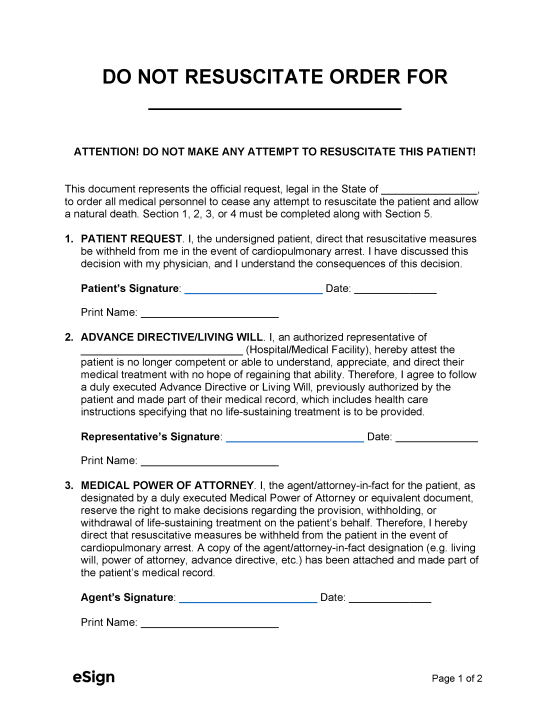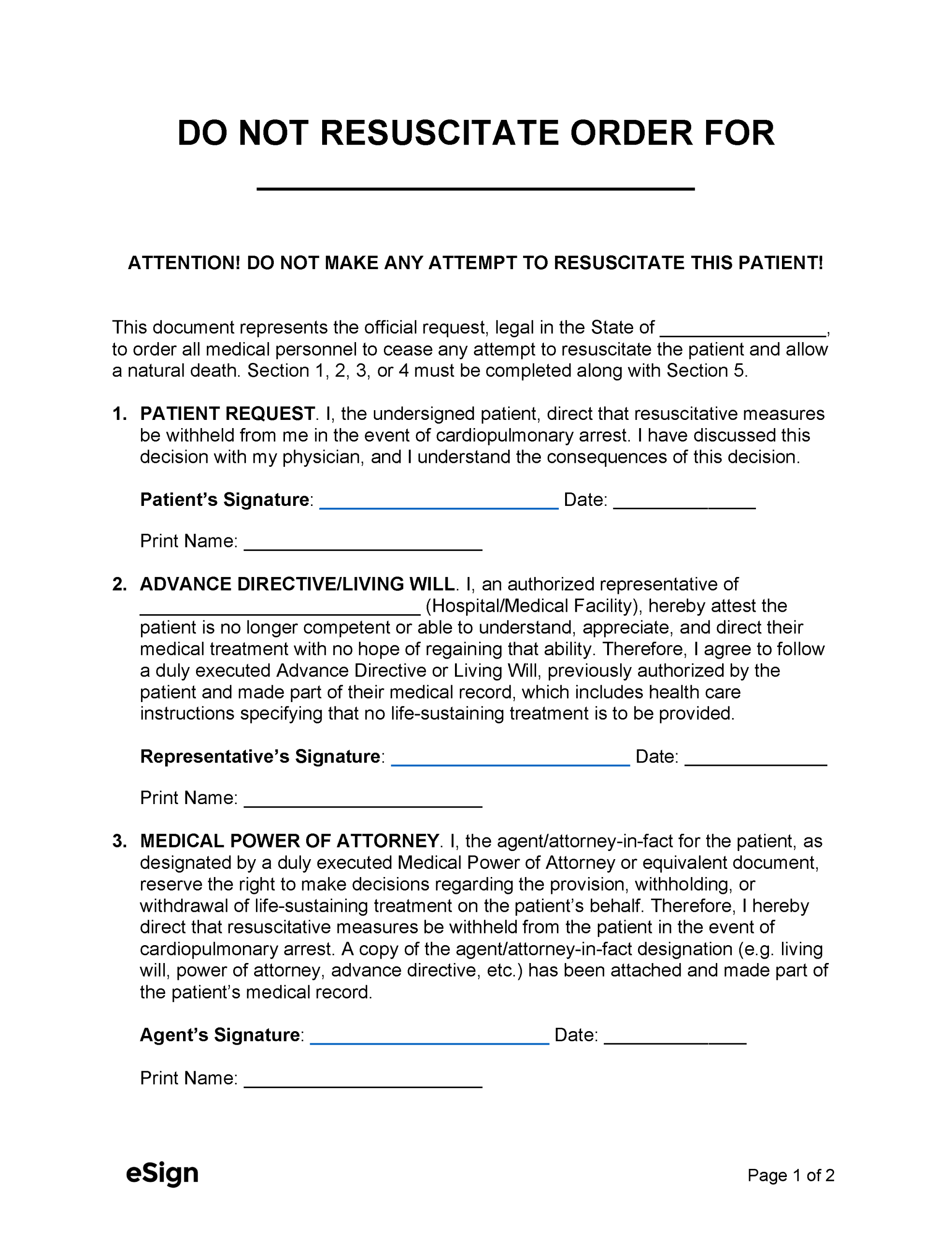By State
- Alabama
- Alaska
- Arizona
- Arkansas
- California
- Colorado
- Connecticut
- Delaware
- Florida
- Georgia
- Hawaii
- Idaho
- Illinois
- Indiana
- Iowa
- Kansas
- Kentucky
- Louisiana
- Maine
- Maryland
- Massachusetts
- Michigan
- Minnesota
- Mississippi
- Missouri
- Montana
- Nebraska
- Nevada
- New Hampshire
- New Jersey
- New Mexico
- New York
- North Carolina
- North Dakota
- Ohio
- Oklahoma
- Oregon
- Pennsylvania
- Rhode Island
- South Carolina
- South Dakota
- Tennessee
- Texas
- Utah
- Vermont
- Virginia
- Washington
- West Virginia
- Wisconsin
- Wyoming
How to Get a DNR Order
A DNR order can be executed to alert emergency medical services to avoid CPR in the event of cardiac or respiratory arrest.
- Discuss With Physician – A physician has to sign off on a DNR order, so the patient and their doctor should discuss the consequences of a DNR before executing it.
- Complete and Sign State Form – Each state has a specific DNR form that is generally considered effective and valid within and outside of healthcare facilities. It is usually signed by a physician and the patient or their healthcare representative.
- Keep it Visible – The form (or an identifying bracelet if available) should be kept near the patient and visible to medical staff so they know not to resuscitate the patient.
Terminal Illness Requirement
A patient does not typically have to be terminally ill to request a DNR order. However, in most states, it is recommended that a DNR be reserved for patients diagnosed with a life-threatening disease or a condition that would render CPR useless.

